Get Back on Track:
Tips for Studying at Home
Medical school is back in session, but likely not how you were expecting or were used to. Getting into a good learning routine and sticking to it long-term can be challenging. How you set up your workspace, structure your time, and the techniques you use to learn play a big role in effectively and efficiently studying at home. Get back on track and unlock your remote studying potential with these tips for studying at home and Lecturio by your side.
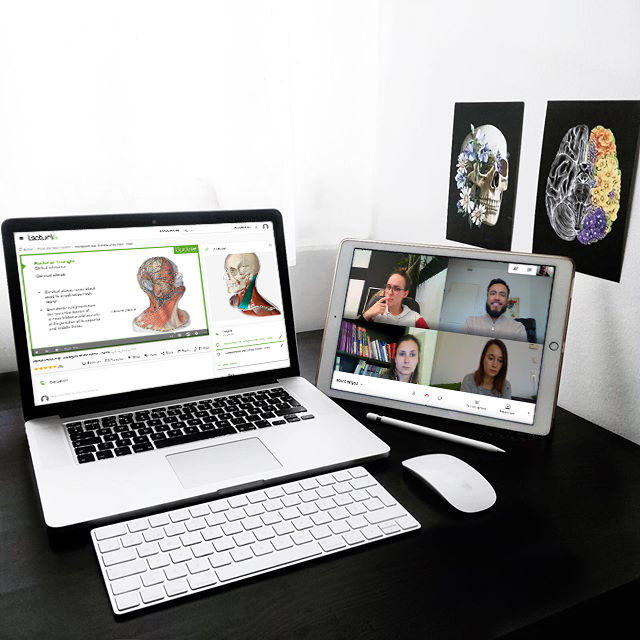
Organizing your study space
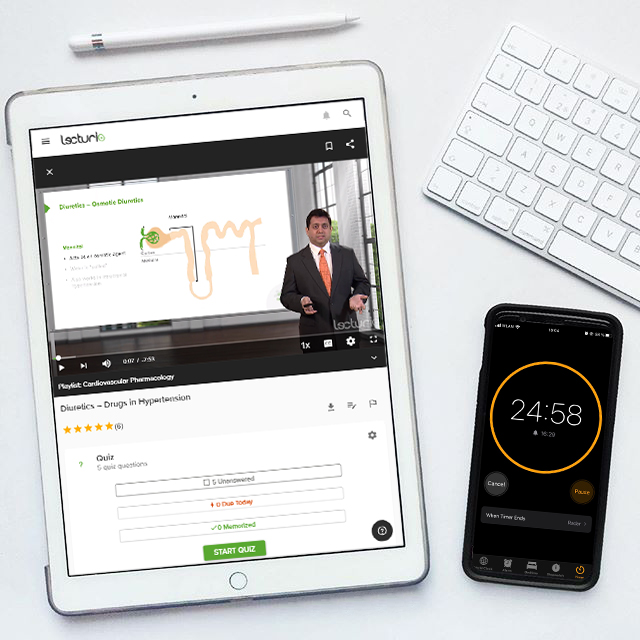
Structuring your time
Your study space is set up and your distractions are minimized… but now what? One of the important elements of a successful study session is not necessarily about the material you review or the content you copy – rather, how you manage your time makes a world of difference in the success of your study session. This starts with your to-do list. Before you start studying, it is important to have a plan for what you want to study so that you can organize your time and focus your efforts on the material that you need to review. Not only do you need to know what you want to study that day, but you should also prioritize your to-do list. If you have a specific exam coming up or you’ll be starting a new rotation soon, you know what is most important to review every day or what you need to spend more time on. Once you have your prioritized to-do list, how do you organize your time?
The Pomodoro Technique is very popular with medical students for this reason: it focuses on accomplishing tasks by working in blocks of 25 minutes (“pomodoros”) with five minute breaks in between, rather than just going down a to-do list. Before you begin, take your to-do list and group your tasks by what you think can be accomplished in about 25 minutes at a time. Then start your timer and get to work: once you have accomplished four pomodoros, you can take a 20-30 minute break. This method helps you to maximize your use of time, minimize procrastination, and keep track of exactly what you’ve accomplished. The five minute breaks between pomodoros help refresh your mind and allow it to reset before starting the next block. The Pomodoro Technique has been adapted by many students for their studies, and many study schedules also suggest this technique or a version of it (e.g. Lecturio’s 40-Day Study Schedule for the USMLE® Step 1). You can also adapt it yourself by choosing different time intervals according to your tasks and your schedule. For example, sitting a full Qbank block, USMLE-style, takes longer than 20 minutes; however, you can break up your subsequent note taking and review in First Aid® by smaller time intervals.
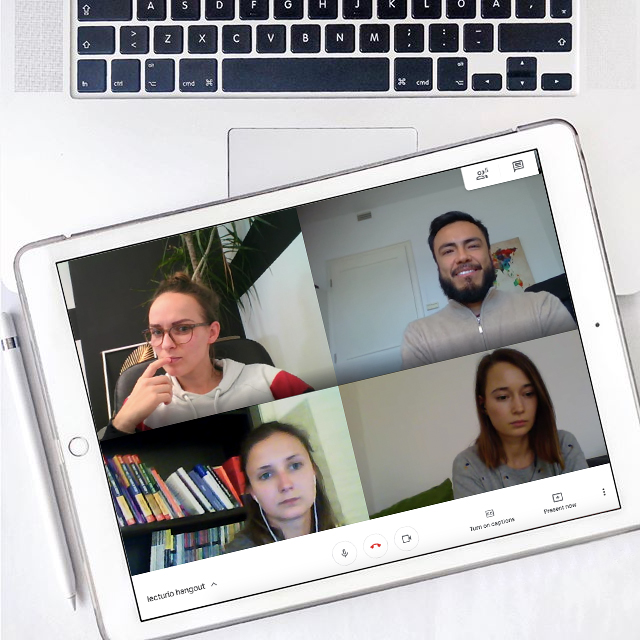
Virtual study groups
Even in your dedicated study space, with your headphones on and your music or ambient noise playing, studying medicine at home can get lonely sometimes. Whether you prefer to review material out loud with other people, or the presence of others studying motivates you to stay focused, study groups are a go-to for many medical students. Just because you’re at home doesn’t mean that you and your classmates can’t keep studying together – creating a virtual study group is one of the best ways to continue learning in a group, even at a distance. Many free tools (such as Facebook Messenger, Skype, Zoom, and Google Hangouts) support group video chats. Having two screens in your study space setup can also be very helpful for virtual study groups, as you can keep your chat on one screen and your study material on the other. Are your classmates not available or do you not want to video chat the whole time? Try using a shared timer to keep yourselves on track, then check back in once the time is up. Alternatively, if you want the motivation of others studying around you but maybe don’t want to directly engage or coordinate a schedule with anyone, you can also check out the multitude of medical students’ “study with me” videos found on YouTube, and put one on in the background.
Study techniques
Sometimes, however, your tasks won’t line up well with the fixed block schedule used in the Pomodoro Technique or a study group doesn’t make sense for what you need to review. There are dozens of other study techniques that can be used to ensure your retention of material. Here are a few to get you started:
Active learning is something you can practice in a variety of study contexts. Instead of passively watching high-yield medical videos or multitasking and thus not taking in as much information as possible, active learning helps you give yourself direction and stay focused on the content. To practice active learning, you should do small self-check-ins before, during, and after you review. Before you start studying, establish what you’re about to learn and what you already know about the subject. While you’re reviewing the material, make sure you know how it fits into the bigger picture, that you understand what you just watched or read, and write down keywords you might want to use for future review. After you’ve completed your study session, ask yourself what you can take away from the study session and make notes of what you need to review or continue learning the next time you approach this topic. By practicing active learning, you not only give your current study session direction, but you can also reflect upon and adapt your study technique in the future.
Problem-Based Learning (also called reverse learning) is a learning technique often used in a classroom setting, in which a class meeting is focused around answering a clinical case question and learning the relevant material as you go. PBL also works as a study technique for dedicated study, for example, as you’re preparing for your licensing exams. In this context, you can use a Qbank to reverse-engineer your studies. Give this a try at home! Instead of starting by reading chapters in First Aid® or watching high-yield video lectures, start by answering clinical case questions. Read through the questions and answer them first, practice test-style. Then, use the related materials (such as text and video answer explanations, First Aid® references, etc.) to enhance your understanding of the topics, or to better understand why the correct answers are in fact correct. Are you new to patient-centered clinical vignettes? Lecturio has a free eBook that walks you through the ins and outs of reading and answering 30 different Qbank-style questions to help get you started.
Spaced Repetition is a study technique you’re actually probably somewhat familiar with in another context. Unless you have a photographic memory, you likely won’t remember everything you studied on the first try. Regularly reviewing what you’ve learned is as important as learning it right the first time. There are many retention strategies out there – some people use paper or virtual flashcards for recall, some people use songs to help jog their memories, and some use mnemonics to keep information straight. But how often should you review certain topics? The idea behind Spaced Repetition is that, instead of learning as many facts as possible within a short period of time, you should review material at increasingly spaced intervals after learning it. If this sounds a lot like learning with flashcards, that’s because it is similar! However, the key with Spaced Repetition is these increased intervals, which are based on not only whether or not you answer a recall question correctly, but how confident you are in your answer.
Using Lecturio means that you’re already using a resource based on the science behind effective studying, including the three aforementioned study techniques. When you watch Lecturio videos, you’re always asked quiz questions to make sure you understood the content (active learning), all of which then go into an algorithm that feeds the questions back to you over time based on your confidence in your answers (Spaced Repetition). The Lecturio Qbank offers not only thousands of clinical case questions in all USMLE® subjects, but also text and video explanations, plus updated First Aid® references that will enhance your studying and prepare you for your next licensing exam (PBL/reverse studying).
Need help studying a specific subject? Our Lecturio Educators also have a few pro tips for you on how to tackle their areas of expertise from home.
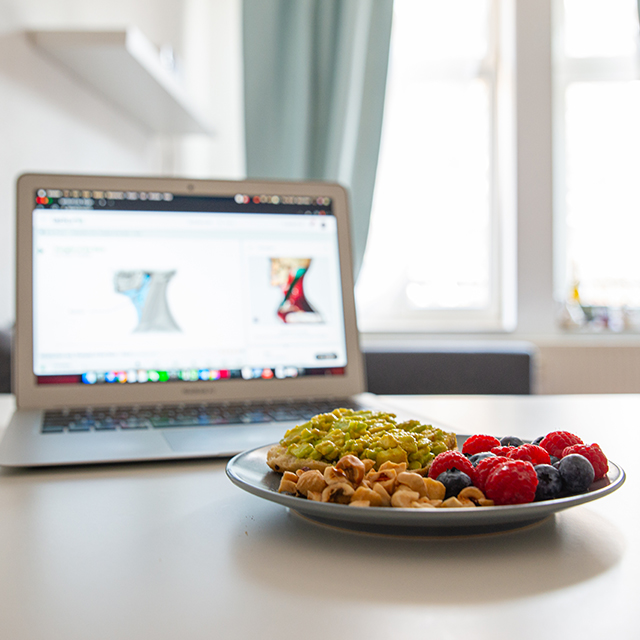
Brain-Healthy Food
You’ve just read about study and learning techniques, but what about break time? Whether it’s the five minutes between pomodoros or a longer break for a meal or at the end of a day, make sure you take some time for yourself to relax and recharge. Your break time is also the ideal time to grab a snack – but instead of reaching for your go-to chips or chocolates, try to grab snacks and prepare meals with ingredients that will also help your brain:
Avocados: Full of mono-saturated fats, vitamin K, and folate, avocados can help keep your blood sugar in the right range, improve your memory, and boost your concentration. They’re also rich in vitamin C and vitamin B, both of which your body needs on a daily basis.
Bananas: Bananas are full of vitamin B6, which according to a study from Boston’s Tufts University, can help improve your cognitive function. They’re also a good source of potassium.
Berries: Research shows that flavonoids, the natural plant pigments that give berries their bright colors, can help with your memory and recall.
Nuts: Nuts can be a great source of healthy fat and protein. According to a 2015 study from UCLA, walnuts in particular might also help improve memory.
Leafy greens: Did you know that leafy greens such as broccoli, kale, spinach, and collards may actually help slow cognitive decline in the long run? That’s because they’re all rich in nutrients such as vitamin K, lutein, folate, and beta carotene.
Omega-3s: Fatty fish, such as salmon, light tuna, cod, or pollack, are a good and healthy source of omega-3 fatty acids, which are healthy unsaturated fats linked to lower blood levels of beta-amyloid. If you’re not a fan of fish, try to incorporate other omega-3 sources into your diet, such as flaxseed, walnuts, chia, or avocados.
Whole grains: Your ability to focus and concentrate comes from a steady flow of energy (read: glucose) in your blood. Choosing whole grain cereals, pasta, or bread to stay mentally alert throughout the day, as whole grain foods have a low-glycaemic index and thus release energy slowly into your bloodstream.
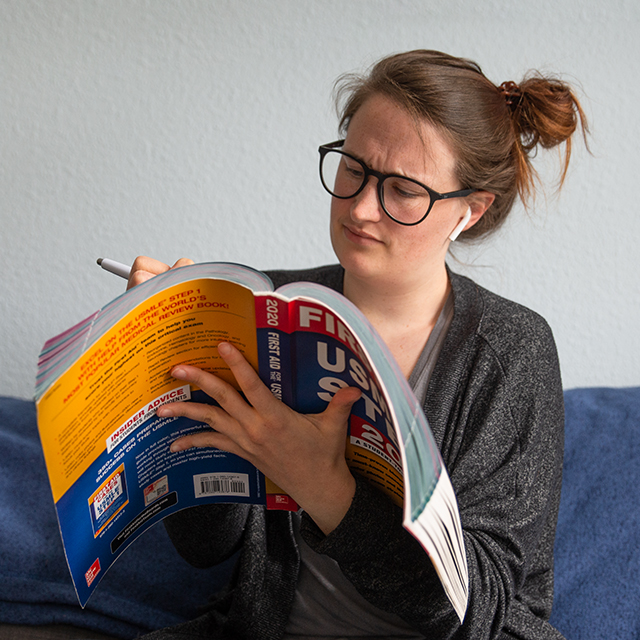
Maintaining your mental health
You’ve perfected your study routine, perhaps have adopted some of the aforementioned study techniques, and have stocked up on brain-healthy food… and yet, you’re still stressed and sometimes feel pretty defeated and/or overwhelmed. Your study breaks aren’t enough, and your motivation may be in decline. Even if you’re not yet to this point, it’s already time to focus some of your energy on your mental health. After all, you can’t best take care of other people if you don’t take care of yourself.
Studying is of course important – but your brain also needs a break. Not only does taking a break from your studies allow your brain to properly process the information you’ve been learning, but it also allows you to de-stress. Getting up and getting moving, whether that means going for a walk or doing a full workout, will help you stay awake and focused. Exercise has been shown to help reduce your anxiety. Other activities, such as taking time for a favorite hobby or to enjoy time with family and friends, can also put your mind at ease. For some, mindfulness meditation helps with more than just focus and concentration; it also provides a space and context for reflection.
Maintaining your mental health while studying at home is also something that can’t always be done just on your own, but rather is best with the help of a mental health professional. Don’t be afraid to seek out professional help – even when it isn’t related to your studies. Many universities have mental health services available for students, and even when studying from home, digital and online solutions exist. Check with your healthcare provider and/or university to learn about the options available to you.
